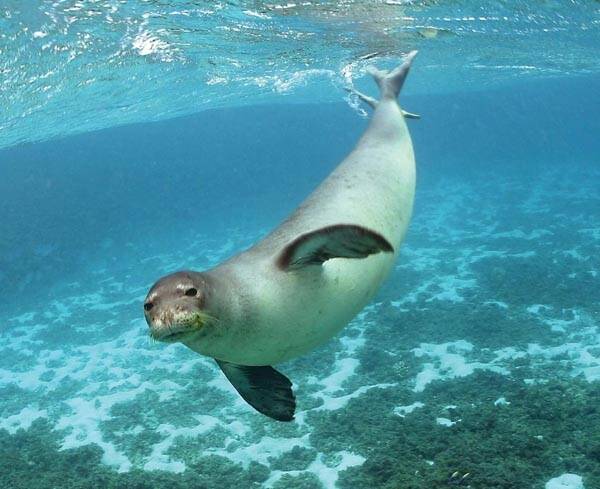Phoca caspica
IUCN
LCBasic Information
Scientific classification
- name:Phoca caspica
- Scientific Name:Phoca caspica,Caspian ringed seal, Phoca leucopus
- Outline:Carnivora
- Family:Phocaea
Vital signs
- length:About 1.6 meters
- Weight:About 100kg
- lifetime:About 20 years
Feature
Small in size, with pale yellow skin and scattered irregular brown or black spots
Distribution and Habitat
Seals are only found in the Caspian Sea. They spend most of their time in the sea, and only come to live on land or ice when they are shedding their hair or breeding.
Appearance
Its morphology is similar to that of the Baikal seal, but the adult is much lighter in color. There are irregular brown or black spots scattered on a light yellow background, and the spots are sometimes surrounded by light rings. The fur of the fetus and newborn is white. The average length of the skull base is 175.1mm, the number of teeth is 34, and the lungs are lobed, with 3 lobes on the left and 4 lobes on the right.
Details
The scientific name of the Caspian seal is Phoca caspica, an animal belonging to the genus Phoca of the family Phocidae.

Caspian seals live in small groups in the middle or southern coast of the Caspian Sea in summer, migrate north in autumn, and form breeding groups on the ice. They give birth on fixed ice from mid-January to late February without building a nest. Newborns weigh 1.2 to 2.8 kg and the lactation period is 4 to 5 weeks. Mating occurs from late February to early March. Females reach sexual maturity at 4 to 6 years old and males at 6 years old.
Caspian seals mainly eat carp, gobies and crustaceans. They go to the estuary to eat carp, cyprinids and zander. Sea eagles prey on Caspian seals, causing the death of a large number of young seals. In 1978, 17 to 40% of Caspian seals in Astrakhan were killed by wolves. They are also hunted by humans. Due to industrial development, pollutants and pesticides have caused them to become sick. Since the late 1990s, they have suffered from canine distemper.
In the 1980s, there were about 400,000 Caspian seals, a significant drop from 1.5 million a century ago. It is estimated that there are currently 470,000 to 650,000.
In 2008, the Caspian seal was listed as an endangered species by the World Conservation Union.
Protect wild animals and stop eating game.
Maintaining ecological balance is everyone's responsibility!








